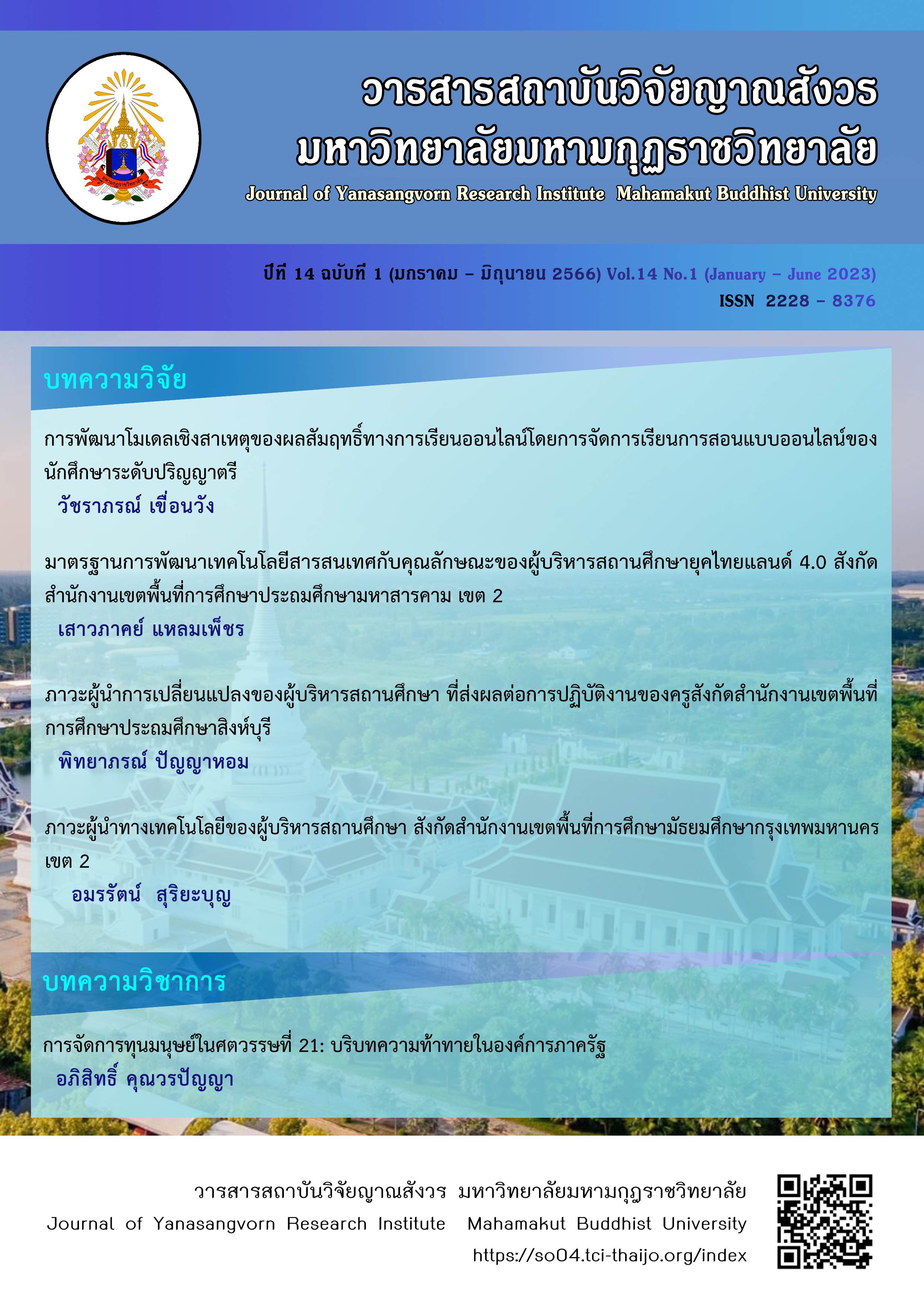STATE AND LEVEL OF ENVIRONMENTAL LITERACY FOR NATURAL RESOURCES AND ENVIRONMENT PROTECTION VOLUNTEERS
Main Article Content
Abstract
The objective of this study was to analyze the state and level of environmental literacy for natural resources and environment protection volunteers. The research was a qualitative type. Questionnaires were used as instruments, consisting of 2 parts: 1. state of environmental literacy with 5 rating scale, and 2. level of environmental literacy with rubric scores type. For data collection, Multi – stage Random sampling was operated with 435 volunteers dealing with natural resources and environment protection. To analyze data, the researchers used descriptive statistics, means, and standard deviation. The study revealed that the state of environmental literacy was divided into 3 aspects: 1. knowledge was at much level (x ̅ = 4.11, S.D. = 0.93), 2. skill was at much level (x ̅= 3.92, S.D. = 0.98), and 3. attitude was also at much level (x ̅ = 4.1, S.D. = 1.09). In term of the level of environmental literacy, there were affecting components as follows: 1. knowledge was at analysis level (x ̅ = 2.81, S.D. = 1.24), 2. skill was at implementation level (x ̅ = 2.45, S.D. = 1.08), and 3. attitude was at analysis level (x ̅=2.78, S.D.=1.05). Nevertheless, it was noted that the volunteers still lacked of participation in taking action, as well as skills at application level. Lastly, it was suggested that there should be a process to run non-formal education to strengthen environmental literacy.
Article Details

This work is licensed under a Creative Commons Attribution 4.0 International License.
References
กรมส่งเสริมคุณภาพสิ่งแวดล้อม. (2561). การศึกษาระดับพฤติกรรมด้านการจัดการขยะของคนไทย.(รายงานผลการวิจัย).กรุงเทพฯ: กรมส่งเสริมคุณภาพสิ่งแวดล้อม.
เก ประเสริฐสังข์, ดุษฎี โยเหลา, และสมไทย วงษ์เจริญ. (2561). การวิจัยปฏิบัติการเชิงวิพากษ์เพื่อสร้างรูปแบบและกลไกการจัดการขยะอย่างครบวงจรบนฐานการมีส่วน
ร่วมของโรงเรียนและชุมชน. วารสารพฤติกรรมศาสตร์, 24(2), 66-80.
กอร์, อัล. (2553). โลกร้อน ความจริงที่ไม่มีใครอยากฟัง : เปิดโปงวิกฤตสิ่งแวดล้อมและทางรอดของมวลมนุษย์ (คุณากร วาณิชย์วิรุฬห์, ผู้แปล. พิมพ์ครั้งที่ 6). กรุงเทพฯ:
มติชน.
ยุพา อยู่ยืน อิมรอน มะลูลีม และวลัยพร ชิณศรี (ม.ป.ป.) การบริหารจัดการมูลฝอยของชุมชนตำบลคูหลวง อำเภอลาดหลุมแก้ว จังหวัดปทุมธานี.
http://grad.vru.ac.th/pdf-journal/JourIS-TP54/10Yupa.pdf
นงนภัส คู่วรัญญู เที่ยงกมล. (2551). สิ่งแวดล้อมและการพัฒนา เล่ม 1 (พิมพ์ครั้งที่ 4). กรุงเทพฯ
สถาบันพลาสติก. (2558). รายงานฉบับสมบูรณ์โครงการพัฒนาอุตสาหกรรมพลาสติก. กรุงเทพฯ : สถาบันพลาสติก.
UNESCO. (1989). Environmental literacy for all. UNESCO-UNEP ENVIRONMENTAL EDUCATION
NEWSLETTER, 14(2). https://unesdoc.unesco.org/ark:/48223/pf0000153577
Yamane, Taro. (1973). Statistics, An Introductory Analysis,nd ED., New York : Harper and Row.


